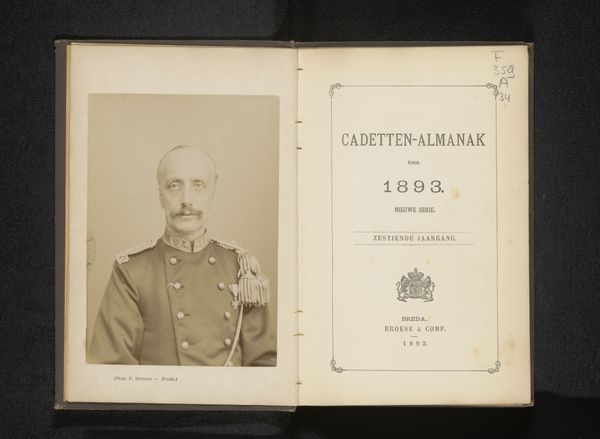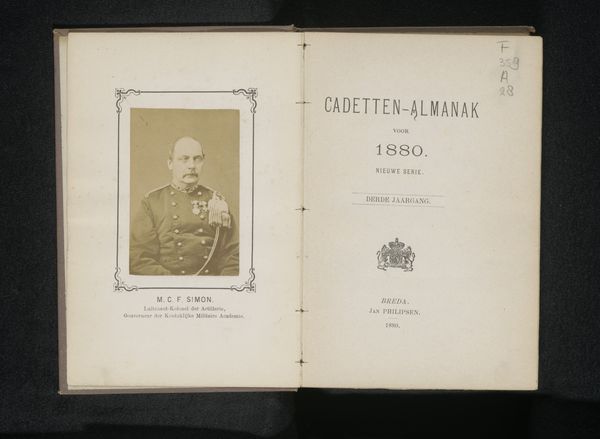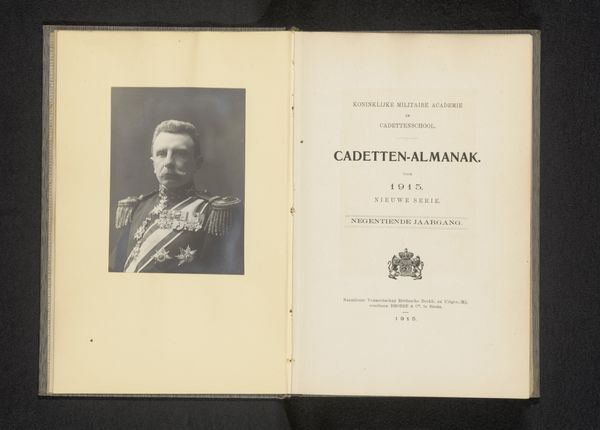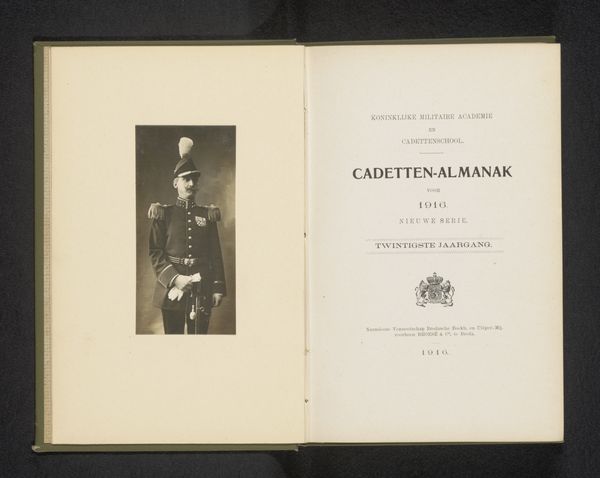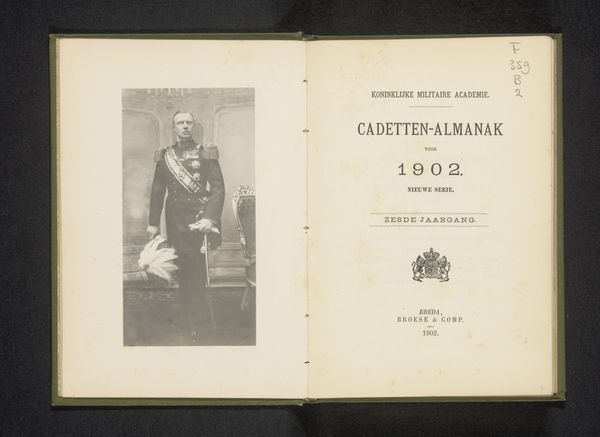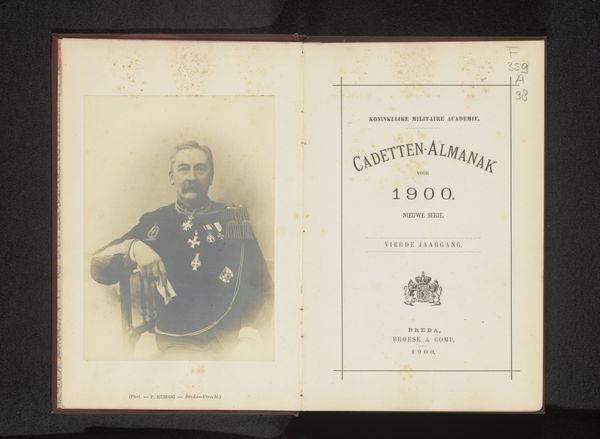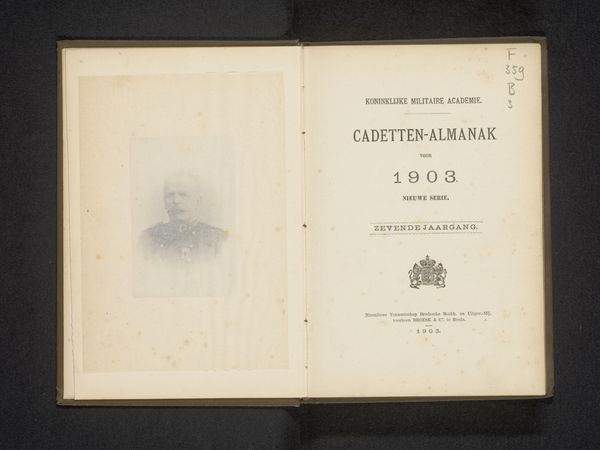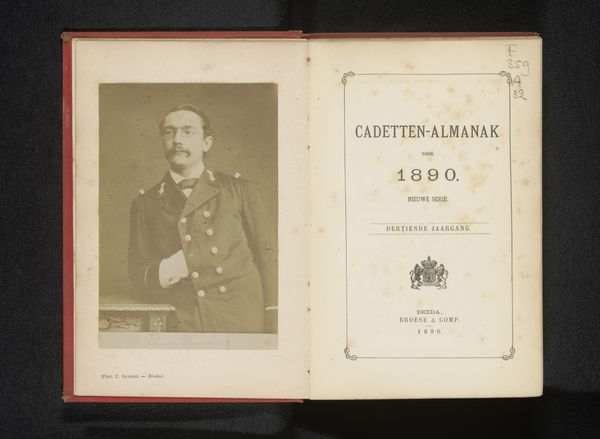
print, photography, albumen-print
#
portrait
#
aged paper
#
paperlike
# print
#
sketch book
#
personal journal design
#
photography
#
personal sketchbook
#
journal
#
thick font
#
history-painting
#
handwritten font
#
academic-art
#
letter paper
#
modernism
#
albumen-print
#
historical font
Dimensions: height 216 mm, width 142 mm, thickness 19 mm
Copyright: Rijks Museum: Open Domain
This Cadetten-almanak, printed in 1911 by Naamloze Vennootschap Bredasche Boekh, presents a portrait of a high-ranking military figure on the left, a stoic guardian of order, and a title page on the right marked with the emblem of Dutch royalty. These emblems of power are not confined to the Netherlands of 1912. Across time, similar symbols appear: the eagle of the Roman Empire, the fleur-de-lis of the French monarchy, each a concentrated vessel of authority. These crests, crowns, and martial figures serve as focal points, embodying a state’s collective will. Yet, such symbols also invite scrutiny and subversion; the mask of power is ever vulnerable to the forces of change. Consider the psychological weight of such imagery: the unconscious desires for order and control, the deep-seated fears of chaos, and the ever-present tension between the individual and the state. These are the undercurrents that charge these images with a power that transcends their immediate context. Indeed, symbols such as these progress in a cyclical fashion, recurring in different epochs, undergoing metamorphosis, and accumulating layers of significance with each iteration.
Comments
No comments
Be the first to comment and join the conversation on the ultimate creative platform.



